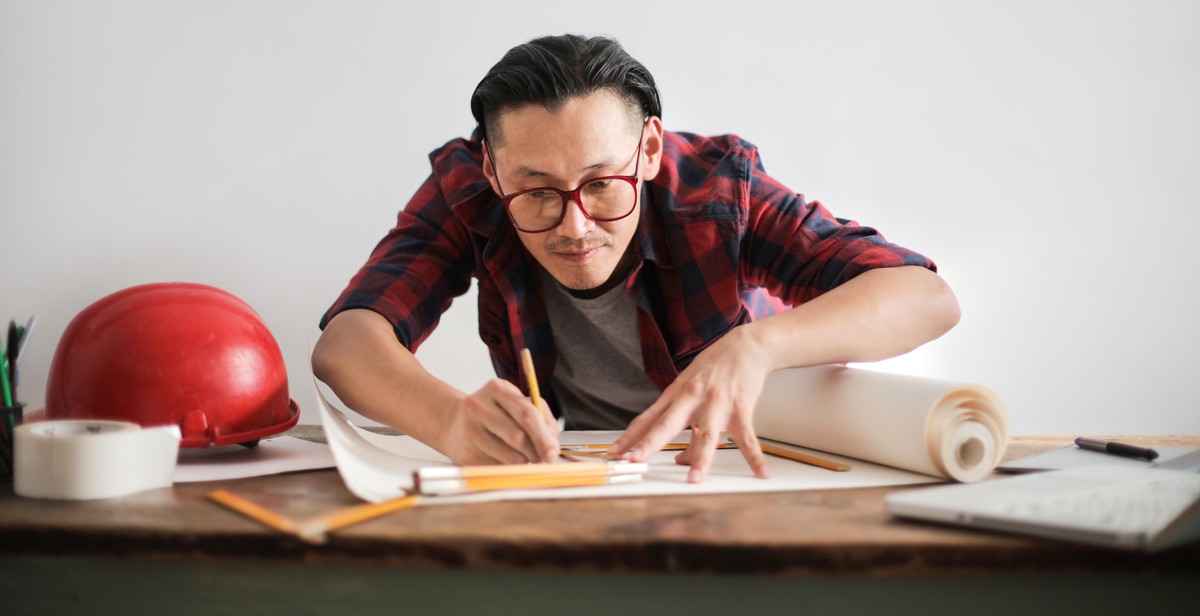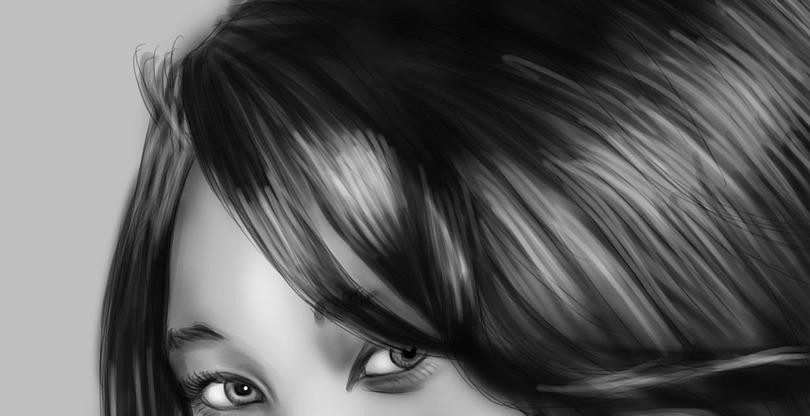How to Paint a Realistic Portrait with Graphite Pencils
Graphite pencils are a popular medium for creating realistic portraits. With the right techniques, tools, and a little patience, anyone can learn how to create stunning portraits that capture the essence of their subject.
Materials Needed
To get started, you will need a few basic materials:
- Graphite pencils of different grades (2H, HB, 2B, 4B, 6B, 8B or as per requirement)
- Paper (preferably high-quality drawing paper or sketchbook paper)
- Eraser (kneaded and vinyl)
- Blending tools (tortillons, blending stumps)
- Reference photo or subject to draw from
Step-by-Step Guide
Follow these simple steps to create a realistic portrait with graphite pencils:
- Start by sketching the basic shape of the head and facial features with a light pencil.
- Use a mid-tone pencil to shade the darkest areas of the face, such as the eyes, nose, and mouth.
- Gradually build up the shadows and highlights with different grades of pencils, using light pressure for lighter areas and heavier pressure for darker areas.
- Use blending tools to smooth out any harsh lines and create a more natural-looking texture.
- Continue to refine and add details to the portrait until you are satisfied with the final result.
With practice and patience, anyone can learn how to create stunning portraits with graphite pencils. So grab your materials and start creating today!
Materials Needed
Before you start drawing a realistic portrait with graphite pencils, you need to make sure that you have all the necessary materials. These materials can be easily found at any art supply store or online. Here are the materials you need:
Graphite Pencils
Graphite pencils are the most important tool when it comes to drawing with graphite. You will need a range of pencils with different grades of graphite, from 9H to 9B. The harder pencils, like 9H, are best for light shading and details, while the softer pencils, like 9B, are best for darker areas and shading.
Drawing Paper
The type of paper you use is also important. You should use a high-quality drawing paper that is specifically designed for graphite pencils. The paper should have a smooth surface and be able to handle multiple layers of graphite without smudging or tearing.
Eraser
An eraser is an essential tool when it comes to drawing with graphite pencils. You will need a kneaded eraser to lift off graphite and create highlights, and a regular eraser for larger areas of erasing. Make sure to use an eraser that does not smudge or damage the paper.
Blending Stump
A blending stump is a tool that is used to blend graphite and create smooth transitions between different shades. It is especially useful for creating realistic skin tones and textures. You should use a blending stump that is made of soft paper or felt, and make sure to clean it regularly to avoid smudging.
Conclusion
Having these materials on hand will ensure that you have everything you need to create a realistic portrait with graphite pencils. Make sure to take your time, practice, and experiment with different techniques to find what works best for you.
Choosing the Right Reference Image
When it comes to creating a realistic portrait with graphite pencils, choosing the right reference image is crucial. Here are some tips to help you choose the best reference image:
1. Choose a High-Quality Image
The reference image you choose should be high-quality and clear. Look for images that have good lighting, sharp details, and a high resolution. Avoid using blurry or pixelated images as they can make it difficult to capture the details and nuances of the subject.
2. Consider the Composition
The composition of the reference image is also important. Look for images that have a clear focal point and a balanced composition. Avoid images that have too many distracting elements or cluttered backgrounds.
3. Look for Good Contrast
Good contrast is essential for creating a realistic portrait. Look for images that have a good range of tones, from deep shadows to bright highlights. This will help you create a portrait with depth and dimension.
4. Choose a Subject with Meaning
Choose a subject that has personal meaning to you or that you find interesting. This will help you stay motivated throughout the drawing process and create a portrait that is meaningful and impactful.
5. Use Multiple References
Consider using multiple reference images to create a more dynamic portrait. You can use one image for the pose and another for the lighting or details. This can help you create a more realistic and unique portrait.
By following these tips, you can choose the right reference image and create a realistic portrait with graphite pencils.
Step-by-Step Guide to Drawing a Realistic Portrait
Step 1: Sketching the Outline
The first step in drawing a realistic portrait is sketching the outline of the face. This should be done lightly with a graphite pencil, using basic shapes to map out the proportions of the face. Start with a circle for the head, and then add the jawline, eyes, nose, and mouth. Pay close attention to the angles and distances between the features, as these will determine the likeness of the portrait.
Step 2: Adding Basic Shapes and Values
Next, add basic shapes and values to the portrait. This involves shading in the shadows and highlights of the face, using light and dark values to create depth and dimension. Use a range of graphite pencils, from 2H for light shading to 8B for dark shadows. Build up the layers gradually, blending the graphite with a blending stump or your fingers.
Step 3: Adding Details and Texture
Once the basic shapes and values are in place, it’s time to add details and texture to the portrait. This includes drawing in the fine lines and wrinkles of the face, as well as the texture of the skin and hair. Use a variety of techniques, such as cross-hatching, stippling, and smudging, to create a realistic texture.
Step 4: Blending and Shading
After adding the details and texture, it’s time to blend and shade the portrait. Use a blending stump or your fingers to smooth out any harsh lines or edges, and to create a seamless transition between the light and dark values. Pay close attention to the direction of the shading, as this will affect the overall look and feel of the portrait.
Step 5: Refining the Details
Finally, refine the details of the portrait by adding any final touches and adjustments. This may include sharpening the edges of the features, adjusting the shading and texture, or adding highlights to the eyes and hair. Take your time and work slowly, making small adjustments until you achieve the desired level of realism.

Tips and Techniques for Realistic Portrait Drawing
Use a Reference Grid
One of the most effective ways to achieve accuracy in portrait drawing is to use a reference grid. This involves drawing a grid over your reference image and then drawing a corresponding grid on your paper. This helps to break down the image into smaller, more manageable sections, making it easier to transfer the details onto your paper.
Using a grid also helps you to maintain the correct proportions in your drawing, ensuring that the facial features are in the right place and are the right size.
Pay Attention to Lighting
Lighting is a crucial element in portrait drawing. It can create depth, shadows, and highlights that add realism to your drawing. When working from a reference image, pay close attention to the direction and intensity of the light source. This will give you a better understanding of where the shadows and highlights should be placed in your drawing.
Use Different Pencil Grades
Using different pencil grades is essential in creating a realistic portrait. The different grades of pencils allow you to create a range of tones, from light to dark. Start with a harder pencil (H) to sketch out the basic shapes and details, then gradually move to softer pencils (B) to add shading and depth.
Practice, Practice, Practice
Like any skill, portrait drawing requires practice. The more you draw, the better you will become. Set aside time each day to practice your drawing skills. Start by drawing simple shapes and gradually move on to more complex forms. Focus on capturing the essence of the subject, paying close attention to the details that make them unique.
Remember, portrait drawing is a journey, not a destination. It takes time and effort to master the techniques and create truly realistic portraits. But with patience and practice, you can achieve your goals and create stunning works of art.

Conclusion
Painting a realistic portrait with graphite pencils may seem daunting at first, but with practice and patience, anyone can master this skill. The key is to start with a good reference photo, take your time with each step, and pay attention to the details. Remember that shading and blending are crucial for creating depth and dimension in your portrait.
When it comes to choosing your pencils, a range of graphite grades is essential. A softer pencil such as 6B or 8B is ideal for darker areas, while a harder pencil such as 2H or 4H is great for lighter areas. Experiment with different techniques such as cross-hatching and stippling to create texture and interest in your portrait.
As you work on your portrait, don’t be afraid to make mistakes. Erasers are your friends, and you can always go back and refine your work. Remember that practice makes perfect, and the more you work on your portraits, the better you will become.
Finally, have fun with your portrait! Don’t get too caught up in the technical aspects and remember to enjoy the process. Creating a beautiful portrait is a rewarding experience, and with the right techniques and tools, you can create a masterpiece.
Additional Resources
- For more tips on portrait drawing, check out the resources available on websites such as Artists Network and Artists Network.
- Consider taking a class or workshop on portrait drawing to learn from experienced artists and get feedback on your work.
- Invest in quality art supplies such as graphite pencils, erasers, and paper to ensure the best results.
| Grade | Hardness | Darkness |
|---|---|---|
| 2H | Hard | Light |
| H | Hard | Light |
| F | Medium | Medium |
| B | Soft | Dark |
| 2B | Soft | Dark |
| 4B | Soft | Dark |
| 6B | Soft | Dark |
| 8B | Soft | Dark |
